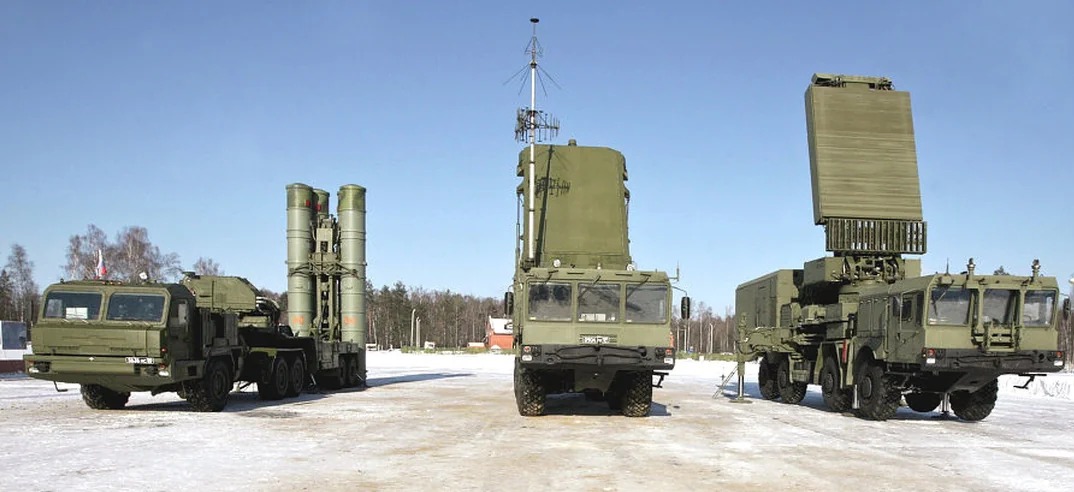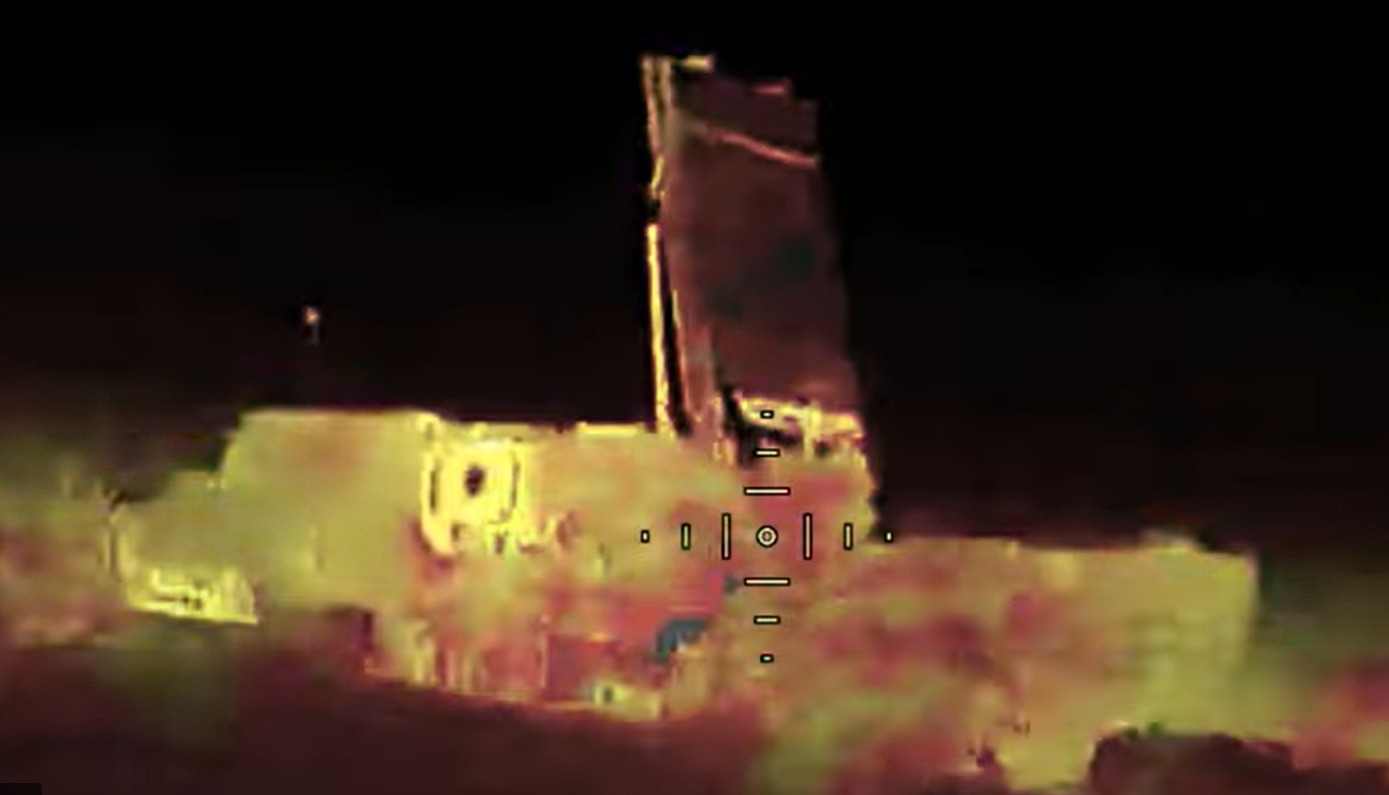Ukraine’s Prymary (Ghosts) special unit has claimed destroying a 98L6 Yenisei radar, deep inside Crimea. The system, part of Russia’s cutting-edge S-500 Prometey air defense network, is designed to track some of the most difficult aerial threats.
The Yenisei wasn’t the original target. During the operation, Ukraine’s intelligence (HUR) operators first believed they had located a component of the S-400 Triumf. Only after analysing combat footage did they realize the fact that they had eyes on one of Russia’s most valuable and elusive radar stations.
Destroying Yenisei is more than just a symbolic victory. It deprives Russia’s forces in Crimea of a crucial early warning tool. The radar not only serves the S 500 but can also be integrated with the S 400 Triumf, significantly boosting detection and interception capabilities across the peninsula.
By eliminating it, Ukraine has punched a hole in Russia’s air defense shield over Crimea, making it harder for Moscow to spot and respond to incoming threats in time.
A video released by HUR shows the strike in action, underscoring how Ukrainian forces have shifted toward precision operations designed to neutralize high-value assets that can not be easily replaced.
The S-500 Prometey: Russia’s Ambitious Shield
The S-500 Property is touted as Russia’s crown jewel in long-range air defense. After state trials in 2020-2021, it was officially accepted into service in April 2021, with Moscow presenting it as a next-generation system capable of countering virtually any modern aerial threat.
On paper, the Prometey’s mission set is ambitious. It is designed to intercept medium and intercontinental range ballistic missiles during their final flight phase, track and engage hypersonic weapons, destroy low orbit satellites, and shoot down enemy aircraft before they can approach Russian airspace.
Central to this defensive web is the 98L6 Yenisei radar, ‘Eyes’ of the S-500s. It is responsible for detecting and tracking high-speed, high-altitude targets, and without it, the system’s overall effectiveness drops dramatically.

According to Russian claims, the Yenisei’s core is a multielement active electronically scanned array (AESA) designed to resist heavy electronic jamming. It can in theory detect both aerodynamic and ballistic targets at ranges up to 600 km and altitudes reaching 100 km. The data it gathers is then fed to command posts, where other air defense assets such as missile batteries can act on it.
Visually, the Yenisei resembles the older 97L6E radar, sharing the same four axle MZKT chassis and a similar configuration, including a fully rotatable antenna unit mounted alongside an equipment container.
However, the two systems diverge in their antenna design. The 96L6E’s primary antenna is split into two sections of different sizes, while the Yenisei features a different array structure optimized for its expanded mission set.
One of Yenisei’s advantages is operational flexibility. It can scan in a full 360-degree mode for wide area surveillance, or focus on a narrow sector to improve its ability to spot ballistic threats. This makes it the standard radar for the S-500 systems and a critical component of Russia’s layered air defense network.
Yet, real-world performance tells a more complicated story. In 2024, when the S-500 was deployed to Crimea to protect the Kerch Bridge, it reportedly failed to intercept an incoming MGM-140 ATACMS ballistic missile.
That failure raised uncomfortable questions about whether Russia’s most advanced air defense system can live up to its sweeping promises when facing fast, unpredictable, and well-planned attacks.

A Broader Ukrainian Strategy
The Prymary unit’s Yenisei strike is part of a larger operational pattern. Ukrainian forces have adopted a methodical approach. Identify and strike the nerve centers of the Russians’ detection network, rather than just the launch systems. By doing so, they render missile batteries less effective or even blind.
Another HUR special unit, Artan, has been conducting similar missions using FPV drones. These strikes have hit Russian vehicles, ammunition depots, and communications hubs, all documented with stark, close-up footage that shows drones weaving between obstacles before detonating on target.
The Prymary unit’s recent Yenisei strike fits into this wider strategy of targeting critical radar and missile systems that threaten Ukraine’s skies.
In one recent compilation video, HUR showcased hits on several high-value assets in occupied Crimea, including Nebo SVU, Podlet 1K, and 96L6E radars, as well as a BK 16 landing craft. Russian air defense and fighter jets scrambled to stop the drones, but they dodged missiles with near cinematic agility “like Neo in the Matrix”, as Ukrainian operators quipped.
Russia’s Radar Network Under Strain
The Prymary unit’s Yenisei strike is part of a larger operational pattern. Ukrainian forces have adopted a methodical approach. Identify and strike the nerve centers of the Russian’s detection network, rather than just the launch systems. By doing so, they render missile batteries less effective or even blind.
The Yenisei’s destruction comes at a time when Russia’s radar network is already under strain.
According to ‘Euromaidanpress’, Russia may have lost up to half of its radar capabilities since the full-scale invasion began in 2022.
One of the most costly setbacks has been the loss of Beriev A-50U airborne early warning aircraft, essential for detecting threats at long range. Ukraine has destroyed or damaged at least four of these aircraft, with the most recent hit occurring during Operation Spider Web in June 2024.
At the start of the war, Russia had an estimated seven A-50U aircraft. By winter 2024, aviation analyst Tom Cooper assessed that only four remained, and by mid-2025, possibly just three.
One surviving aircraft has been spotted in Vorkuta, far in Russia’s Arctic permafrost zone, likely to keep it out of Ukrainian strike range.
Moscow has been developing a next-generation A-100 radar aircraft, but none of the three prototypes are believed to be operational.
Strategic Implications
Each radar destroyed, whether mounted on a mast in Crimea or in the nose of an A-50U circling high above Russia, weakens Moscow’s early warning net. Fewer radars mean more blind spots, and more blind spots mean greater vulnerability for high-value targets, such as the Kerch Bridge, key air bases, naval facilities, and command centers.
This depletion also forces a change in Russian operating patterns. The remaining radar assets have become too precious to risk in exposed positions.
That means fewer sorties for the A-50Us, fewer deployments of rare ground-based systems like the Yenisei near contested areas, and an overall shift toward holding these assets in reserve. While this may protect them from destruction, it also reduces their deterrent effect and limits Russia’s ability to respond to fast-moving threats.
For Ukraine, the strategy is clear. By systematically targeting the rearrest and most capable radars, Kyiv not only weakens Russia’s current defences but also imposes a long-term cost.
The Road Ahead
If current trends continue, Russia’s radar coverage over Crimea and other contested areas will continue to thin.
Ukraine’s forces have shown they can find and hit even heavily guarded assets, and each successful strike emboldens further operations. The destruction of the Yenisei shows that no part of Russia’s high-end air defense network is beyond reach.
In modern warfare, control of the skies often comes down to who can see and act first. By dismantling Russia’s ‘electronic eye’, Ukraine is betting that blinding its adversary will open the way for strikes that could reshape the battlefield in its favour.
The loss of the Yenisei radar is one more step in that process and perhaps one of the most consequential yet.
- Shubhangi Palve is a defense and aerospace journalist. Before joining the EurAsian Times, she worked for ET Prime. She has over 15 years of extensive experience in the media industry, spanning print, electronic, and online domains.
- Contact the author at shubhapalve (at) gmail.com



